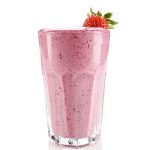Guest post by Alexandra Rothwell, MPH, RD, CSO, CDN, Dubin Breast Center, The Tisch Cancer Institute.
 Are you one of the many people with a few extra pounds that won’t budge, even though you’re doing everything right? If so, read on to find out if you’ve been tricked by one of these 5 common weight loss saboteurs…
Are you one of the many people with a few extra pounds that won’t budge, even though you’re doing everything right? If so, read on to find out if you’ve been tricked by one of these 5 common weight loss saboteurs…
Drinking Diet Soda
When craving a sweet drink, health conscious people look for something that won’t break the calorie bank and often reach for a diet soda. Unfortunately, these “diet” drinks may do more harm to the waistline than many people realize.
Studies have found that regular consumption of artificially sweetened beverages is associated with increased risk for chronic diseases such as obesity, type-2 diabetes, cardiovascular disease, and metabolic syndrome. They stimulate the release of insulin, and may promote weight gain – particularly to the abdomen.
Instead: drink still or sparkling water with slices of fresh fruit, cucumber, or sprigs of mint.
Snacking on Dried Fruit and/or Nuts
It might be called a trail mix, but unless you’re hiking or trying to gain weight, there is no reason to snack on dried fruit or nuts.
Don’t misunderstand–nuts are incredibly healthy foods and a high intake of plant-based fats such as nuts and olive oil is associated with a reduction in risk for type-2 diabetes and cardiovascular disease. The key word here is “snacking.” Nuts and dried fruits are concentrated sources of calories, meaning, for a very small quantity, you get a LOT of calories.
If you’re trying to lose weight, eating calorie dense foods in addition to your regular meals could add so many extra calories that you throw off all of your other weight loss efforts. A few mindless handfuls of nuts or dried fruit could be 500+ calories!
Instead: combine nuts with low calorie, high volume vegetables. Nuts sprinkled on a big green salad are a perfect example. Replace dried fruit with real, whole fruit, or snack on whole fruit or vegetables to get you to your next meal.
 Drinking Smoothies
Drinking Smoothies
I can’t count the number of people I know who have added smoothies into their diets to help with weight loss or general health. The problem with this is that many of these “health” drinks are so loaded with the natural sugar from fruit that they can make weight loss more difficult to achieve. Packing the blender with a few different kinds of fruit can easily lead to smoothies with 50 or 60 grams of sugar!
The other problem with fruit smoothies is that blending lessens the workload for the body’s digestive system, and these sugars are absorbed quickly, bringing up our blood sugar and insulin levels rapidly. Speeding digestion also means that we may not stay full for as long as we would after a meal of solid food.
Instead: Eat whole fruit to reduce the impact on your blood sugar and keep you full longer. When making smoothies, stick to a base of non-starchy leafy greens with a touch of fruit for flavor, aiming for less than 10 grams of sugar per beverage. Here are some more tips for making your smoothies a truly healthy drink.
Eating Salads
I’m all for eating salads, but what is in that salad can make every bit of difference in the achievement of weight loss. A sprinkle of cheese, a handful of dried fruit, nuts, avocado, croutons, dressing…these are the things that make salad good, right? Indeed. They are also the treats that quickly bring up the calorie content of any meal. While assuming they are making the healthiest possible choice, many people underestimate how many calories they are getting in their salads.
Instead: Please, eat salads! Fill them with a rich variety of non-starchy vegetables, such as lettuce, kale, broccoli, bell peppers, tomatoes, cucumber, onion, eggplant, cabbage, celery, etc. Choose 2-3 “goodies” (avocado, olive oil, and nuts are excellent choices) and measure your portion sizes to accurately reflect an appropriate calorie budget.
Eating Frequent Meals
Many of my patients assume that eating frequent meals or a combination of meals and snacks is key for weight loss. While eating small frequent meals throughout the day is an effective strategy for some, helping to stave off extreme hunger and overeating, this does not work for everyone. For some, eating frequently can lead to an all-day graze, where calories become excessive and one never really feels satisfied after a meal.
Instead: If you’re trying to lose weight and the grazing description fits your current eating pattern, it’s time to change things up. I typically recommend eating 3-4 moderately portioned and satisfying meals per day, spaced 3-5 hours apart. If you’re hungry between meals (not boredom, stress, tiredness, etc.), eat fruit or vegetables to get you to the next meal.
If the small, frequent eating pattern is more preferable to you, keep in mind that the most important part of this concept is “small”. Make a daily plan and keep a food diary to ensure that your total intake is where you want it to be.
****
Check out her personal blog at www.feastofgreen.com.
feastofgreen.com
